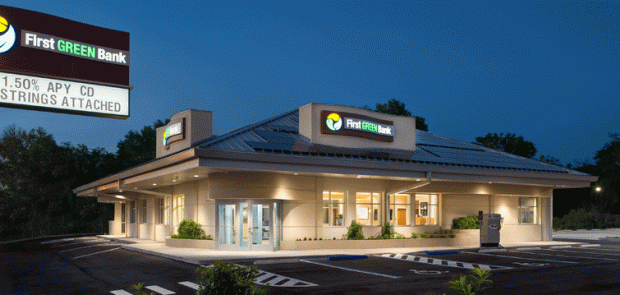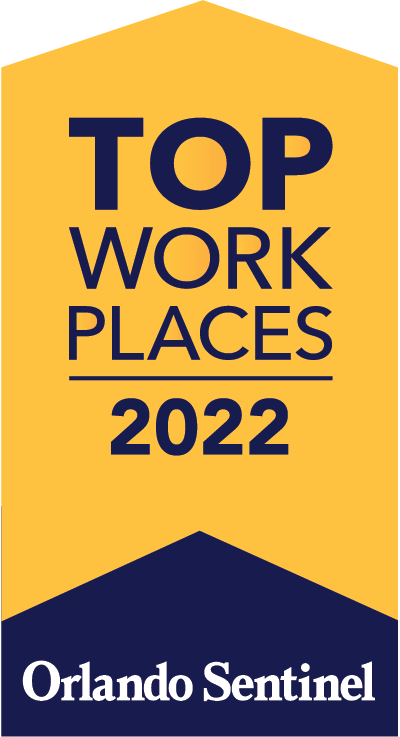Winter Park bank generates its own energy

The Collage Companies recently completed construction of a sustainable building for First GREEN Bank of Winter Park.
With a corporate vision that emphasizes social and environmental responsibility, First GREEN Bank selected LEED professionals to design and construct its Winter Park Branch. The Collage Companies, along with VOA Architects, constructed this project, which won the Excellence in Construction Eagle Award, the International Interior Design Association’s Sustainability Award, and achieved LEED Gold Certification.
This LEED Gold project placed special requirements on the general contractor and subcontractors. The U.S. Green Building Council judged the project on number of areas including site sustainability, water efficiency, and materials and resources. Collage vetted subcontractors who would meet stringent standards and follow USGBC’s guidelines.
Because the project included complete demolition of two residential buildings and partial demolition of a retail space, Collage developed and implemented a detailed construction waste management plan. Subcontractors pulverized concrete off site to be used as fill or sub-base in the future. Broken masonry units were converted to fill, and whole concrete blocks could be reused. Metal – flashing, conduit, piping, wiring, and structural steel – and wood products were recycled. The refrigerant waste management subcontractor recovered 52 lbs of refrigerant from five A/C units. Doors, lighting, and other fixtures were carefully protected so that they could be reused, and cabinets and plumbing fixtures were donated to Habitat for Humanity. 100% of demolition waste and over 75% of construction waste by weight was diverted from landfills to reuse and recycling programs.
From structure to interior finishes, the project employed green products wherever possible. Structural steel studs and beams in the main building and the drive-through are 100% recycled. The terrazzo flooring consists of recycled glass and sand, and the carpeting and wall and floor tiles were made from post-consumer waste materials. Oak trees destroyed during the demolition process were milled on site and turned into flooring and countertops.
The high-efficiency fluorescent lights and LED task lighting used throughout the building turn off when not in use, generate less heat, and reduce electrical use for lighting by 62%. Programmed to account for seasonal fluctuations, the thermostats also minimize excess cycles while the building is not occupied. The HVAC system includes high efficiency A/C units and ozone friendly refrigerants. Photovoltaic panels on the roof of the main building and the drive-through provide from 69% to 100% of the total energy for the building, almost making the sustainable building NetZero.



